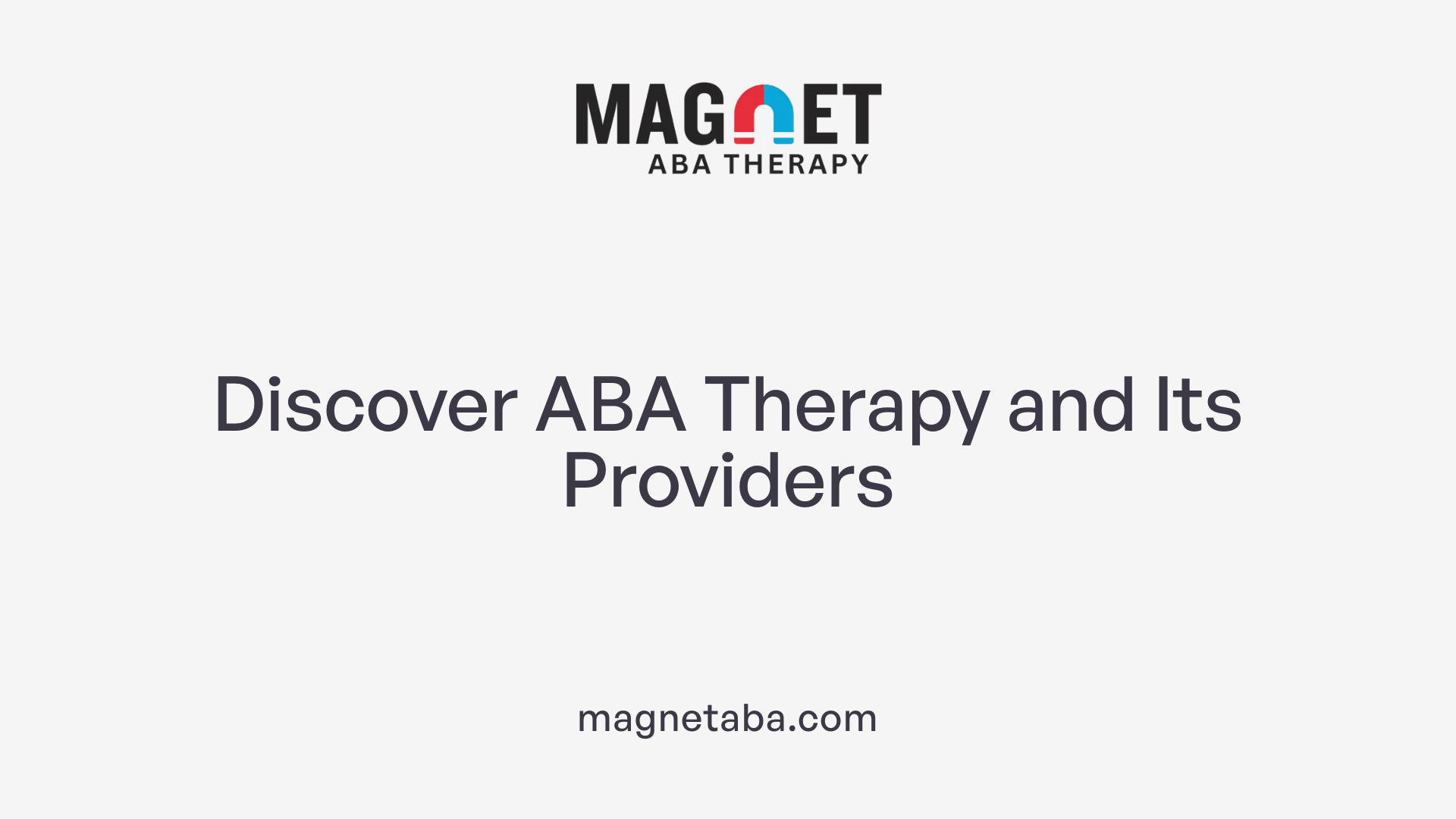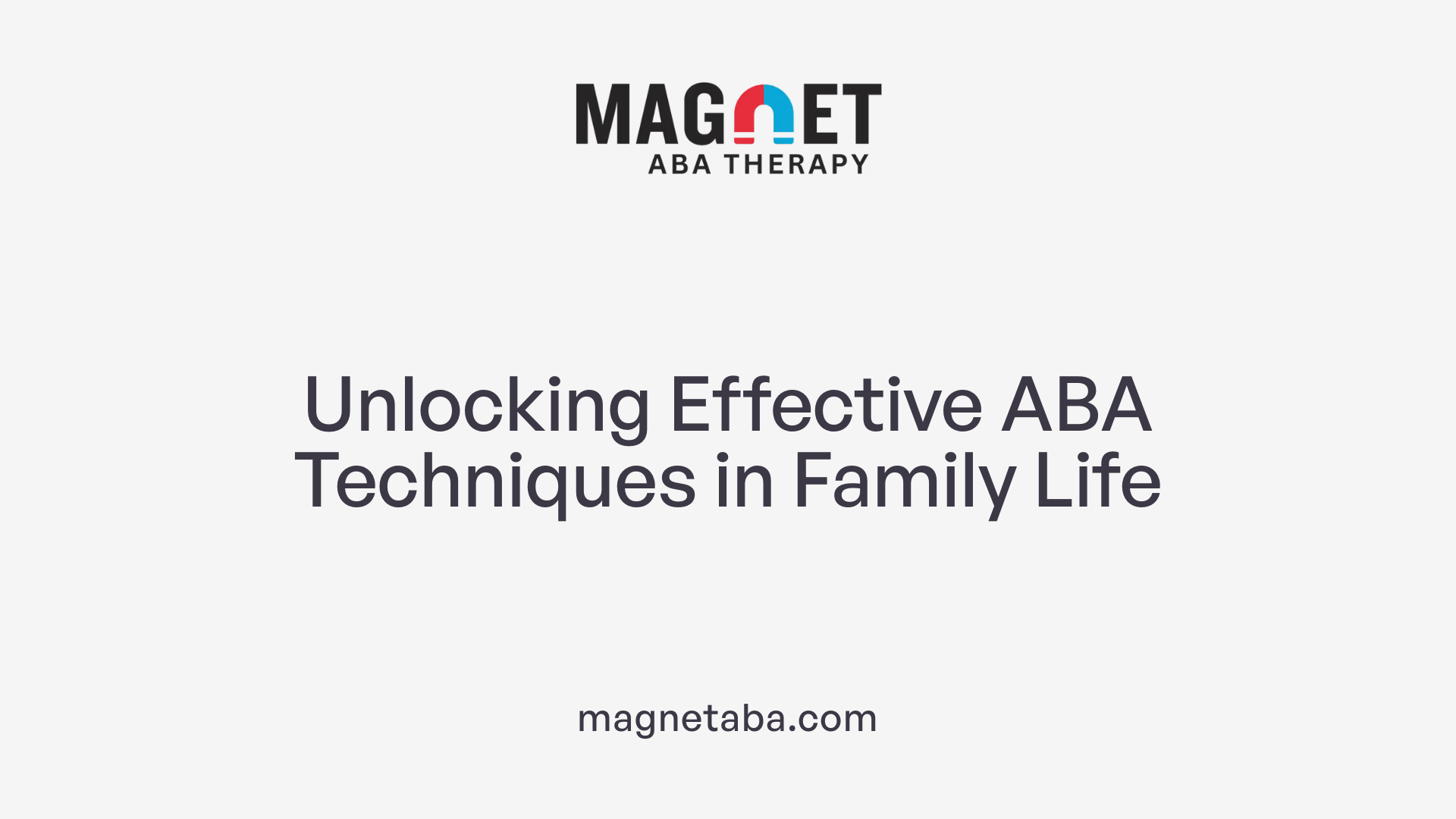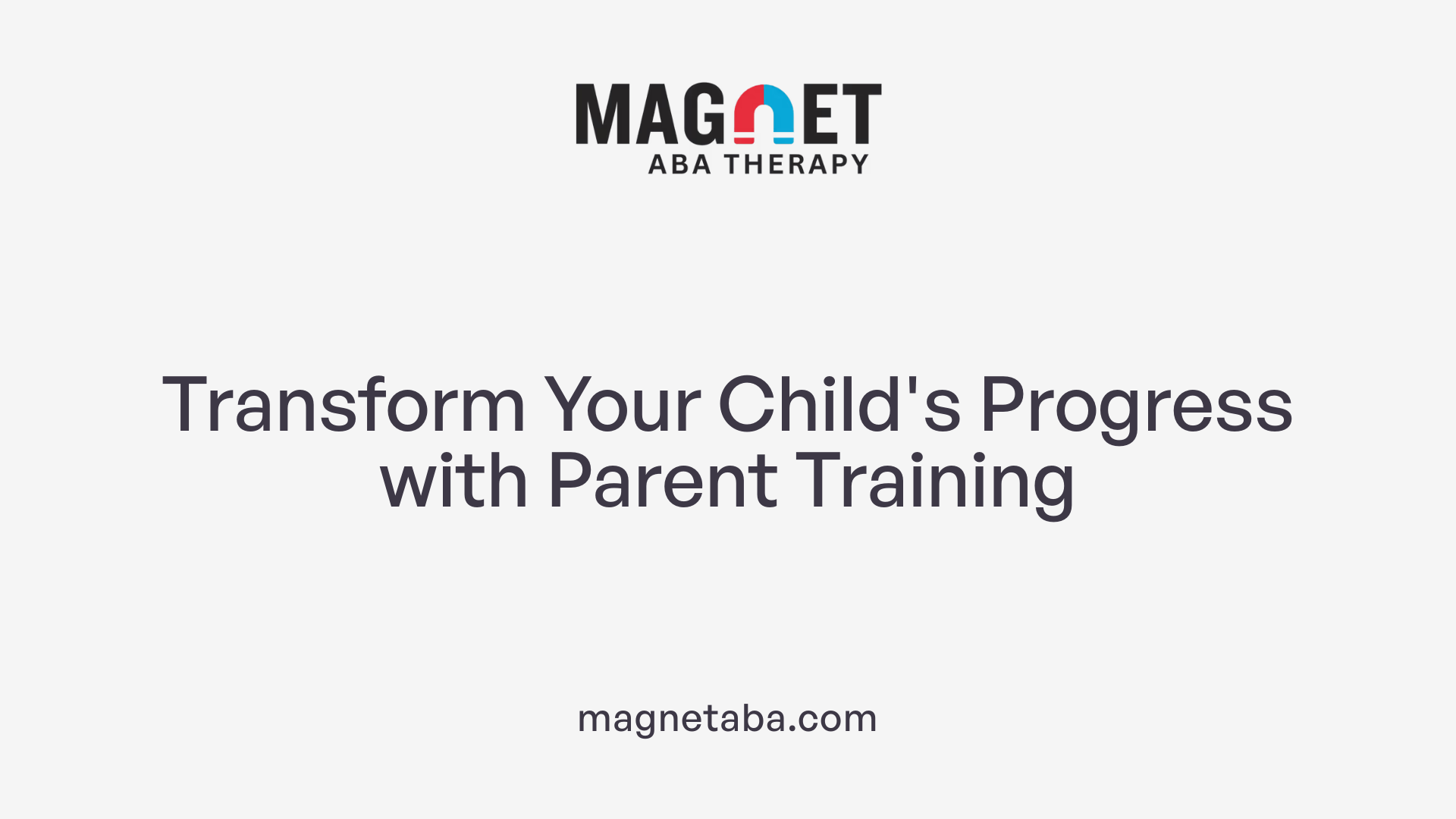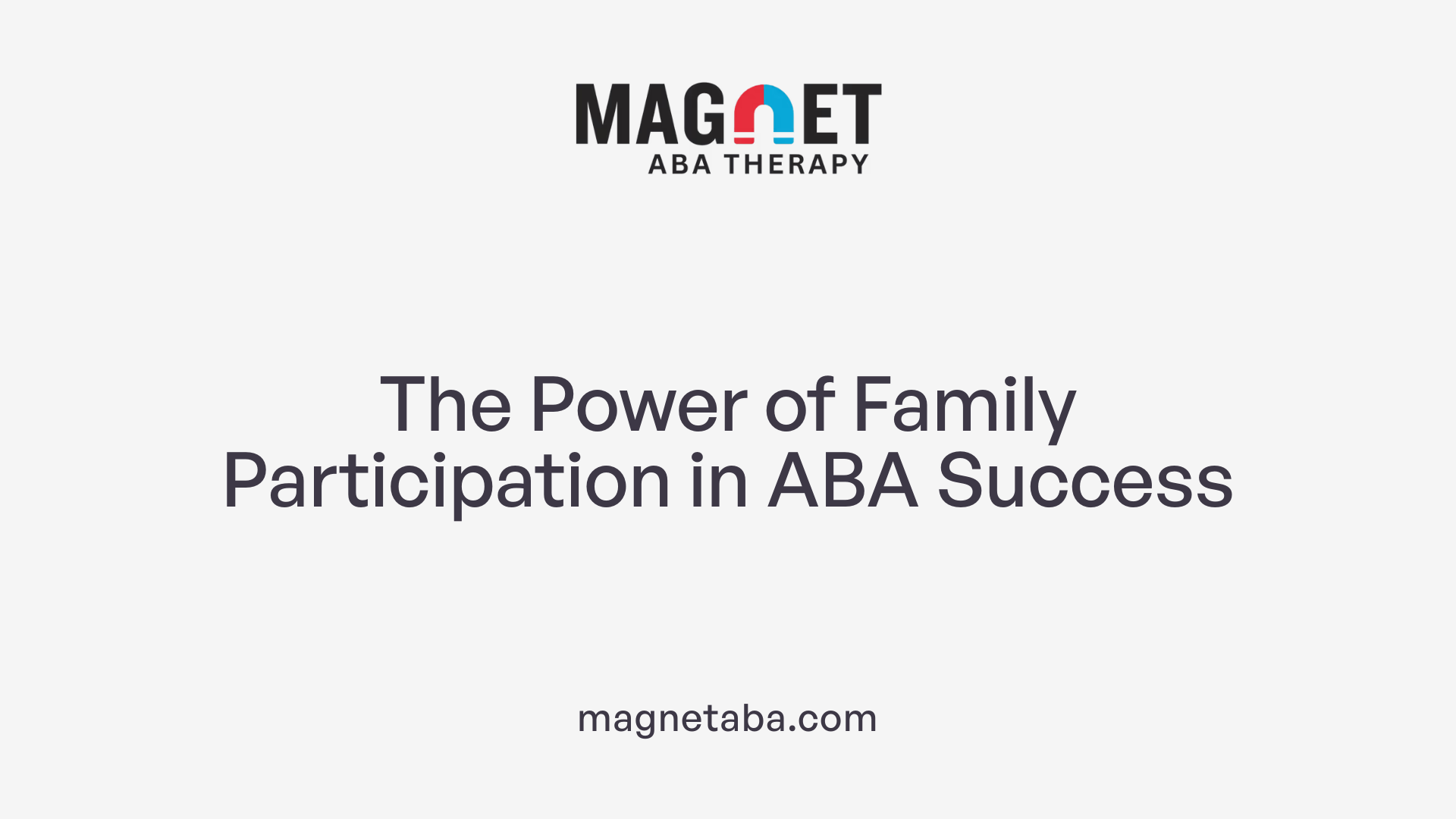Understanding ABA and the Family's Role
Applied Behavior Analysis (ABA) therapy stands as a cornerstone treatment for individuals with autism spectrum disorder, employing evidence-based techniques to enhance positive behaviors and reduce challenges. Key to maximizing its benefits is the vital involvement of family members, whose active participation not only reinforces therapeutic goals but also fosters an environment conducive to sustained progress and skill generalization beyond clinical settings.
What is ABA Therapy and Who Provides It?

What Does Parent Training in ABA Involve?
Parent training in ABA encompasses both education and hands-on training. Parents learn individualized strategies to manage their child's behaviors and support skill acquisition, boosting the overall effectiveness of therapy. This training begins with an initial assessment and includes education on behavior principles.
One central component is Behavior Skills Training (BST), where parents practice newly learned strategies with guidance from therapists. Ongoing support ensures that parents can confidently implement behavioral strategies at home and in community settings, fostering consistency across environments.
How Does Parent Training Improve Therapy Outcomes?
Research highlights several benefits of parent training:
- Enhanced child progress toward therapeutic goals.
- Strengthened child-parent relationship.
- Increased parental confidence.
- Faster graduation from therapy programs.
- Improved skill generalization and maintenance.
- Reduced parental stress.
By actively involving parents, ABA therapy encourages the reinforcement of skills outside structured sessions, leading to greater consistency and lasting changes in behavior.
Why Is Family Involvement Crucial in ABA Therapy?
Family involvement creates a nurturing environment that promotes learning, growth, and development. Successful ABA programs depend on active participation, collaboration, and open communication between therapists and parents.
Collaborative efforts ensure consistency and continuity of care, maximizing therapy benefits. Therapists provide families with resources and insights tailored to the child's needs, fostering empowerment and ownership among parents.
How Are Parents Equipped Through ABA Training?
ABA parent training equips families with strategies to reinforce positive behaviors, manage challenges, and promote skill development daily. Workshops, seminars, and educational materials increase understanding of autism spectrum disorder (ASD) and ABA principles, enhancing acceptance and resilience.
Effective family engagement involves:
- Establishing clear communication channels.
- Setting realistic expectations.
- Involving families in goal setting, progress monitoring, and decision-making.
This comprehensive approach transforms parents into active partners in their child's progress, extending the impact of therapy beyond clinical settings.
Core ABA Techniques and Their Application in Family Settings

What are the common methods and techniques used in ABA therapy to address behaviors associated with autism?
Applied Behavior Analysis (ABA) therapy utilizes several effective techniques to promote learning and manage behaviors associated with autism. One widely used method is Discrete Trial Training (DTT), which breaks down skills into small, systematic trials to teach specific behaviors step-by-step. Natural Environment Teaching (NET) complements this by encouraging skill acquisition in everyday settings, helping children apply what they learn in real-life situations.
Task analysis is another key strategy that divides complex behaviors into manageable, sequential steps, allowing for easier learning and mastery. Families also often use visual modeling and video modeling to demonstrate desired behaviors clearly. Techniques like prompting and fading help guide children through tasks while gradually reducing assistance, empowering them to perform independently. Additionally, behavior chaining links individual steps together to build more complex skills.
Central to all these methods is positive reinforcement, which motivates children through praise or preferred activities to encourage desired behaviors. Antecedent modifications are used to adjust the environment ahead of time to reduce challenging behaviors and foster success.
How families can use ABA methods at home
Parents play a crucial role in strengthening therapy outcomes by implementing ABA techniques in the home and community. Through parent training, families learn how to reinforce positive behaviors, manage challenges, and promote skill development daily. This training includes initial assessments, hands-on practice with strategies like Behavior Skills Training (BST), and ongoing support to ensure effective application.
By applying ABA strategies consistently, parents help generalize their child's skills beyond therapy sessions, creating a seamless learning environment in multiple settings such as home, school, and public places. Active family involvement fosters empowerment and ownership, transforming parents into active partners in their child's developmental progress.
Role of data collection and assessment
Ongoing data collection and individualized assessments are foundational to ABA's success. Functional Behavior Assessments (FBA) help identify the purpose behind behaviors, enabling therapists and families to set targeted, meaningful goals. Frequent progress monitoring ensures that interventions are effective and adjusted as needed.
Collaboration between therapists and families through clear communication channels promotes consistency and continuity of care. This teamwork supports not only skill acquisition but also quicker therapy graduation, improved maintenance of learned behaviors, and a reduction in parental stress.
Through combining structured ABA techniques with family engagement, therapy becomes a dynamic, evolving process tailored to the child's unique strengths and needs.
The Impact of Parent Training on ABA Outcomes

What Are the Components of Effective Parent Training?
Parent training in Applied Behavior Analysis (ABA) involves a mix of education and hands-on practice tailored to each child's needs. It starts with an initial assessment to understand the child's behaviors and skills. Parents then receive education on behavior principles, such as how behaviors are acquired and changed.
A key part of training is Behavior Skills Training (BST), where parents engage in role-playing and receive feedback to master strategies for reinforcing positive behavior and managing challenges. Ongoing support from therapists helps families adapt and maintain these skills at home and in community settings.
Clear communication, collaborative goal setting, and regular progress review are essential, ensuring parents feel empowered and involved in treatment decisions.
How Does Parent Training Benefit Child Progress and Family Dynamics?
Research indicates that parent training leads to better progress toward child goals by promoting consistency between therapy and home environments. When parents actively apply ABA strategies, children experience improved skill generalization and maintenance across different settings, such as home, school, and community.
Family involvement creates a nurturing environment that supports learning and development. This engagement strengthens the child-parent relationship by building mutual understanding and trust. Parents gain confidence as they see positive changes in their child’s behavior, making them more effective advocates and caregivers.
Can Parent Training Help Reduce Parental Stress?
Yes, parent training has been shown to lower parental stress levels. By equipping parents with practical tools and clear guidance, they feel more capable of managing their child’s behaviors. This reduces feelings of frustration and helplessness.
Moreover, confident parents who understand the therapy process experience less anxiety about their child’s progress. Family empowerment promotes a sense of ownership in the child’s journey, turning challenges into achievable goals.
How Can Families and Caregivers Best Support Individuals Undergoing ABA Therapy?
Families and caregivers best support ABA therapy by actively engaging in treatment—learning ABA strategies, practicing reinforcement techniques, and managing behaviors consistently. They help generalize skills by applying strategies in daily routines and outside therapy sessions.
Open communication with therapists is crucial for coordinating efforts and making timely adjustments. Creating structured routines with positive reinforcement reduces behavioral difficulties. Emotional support and patience encourage independence and strengthen family bonds throughout the process.
Family Engagement: The Key to Consistency and Skill Generalization

Why is active family participation important in ABA therapy?
Active family participation strengthens the foundation of ABA therapy by promoting collaboration and open communication between parents and therapists. When families are involved, they gain a deeper understanding of behavioral principles and acquire hands-on training, such as Behavior Skills Training (BST), which helps them support their child effectively. This partnership empowers parents to manage challenges and reinforce positive behaviors, leading to improved child-parent relationships and greater parental confidence.
How does family involvement ensure consistency across different settings?
Family involvement bridges therapy and daily life, ensuring that behavior strategies are consistently applied at home, school, and in community environments. This consistency enhances skill generalization and maintenance, allowing skills learned during therapy to transfer more smoothly to various real-world situations. Collaboration between therapists and families creates continuity of care by aligning goals and methods, which can result in quicker therapy graduation and decreased parental stress.
What role do communication and shared decision-making play?
Open communication channels and shared decision-making foster trust and keep parents engaged in their child's progress. By involving families in goal setting, progress monitoring, and treatment planning, therapists provide personalized guidance tailored to the child's strengths and needs. This collaborative approach nurtures parental ownership and resilience, making family members active partners rather than passive observers in the therapeutic journey.
These aspects of family engagement are essential for maximizing the effectiveness of ABA therapy and promoting a supportive environment where children's learning and development thrive.
Empowerment Through Education and Support

Parent Education Through Workshops and Materials
ABA parent training often includes educational workshops, seminars, and accessible materials that deepen parents' understanding of Autism Spectrum Disorder (ASD) and Applied Behavior Analysis (ABA) principles. This foundational knowledge helps parents appreciate the rationale behind therapy strategies and prepares them to actively participate in their child's development.
Resources and Guidance Provided by Therapists to Families
Therapists play a vital role in supporting families by offering tailored resources, practical guidance, and insights into the child's unique strengths and challenges. These contributions inform individualized treatment plans and enable parents to implement targeted interventions confidently.
How Empowerment Affects Therapy Progress and Parental Confidence
When parents feel empowered through education and support, they become active partners in therapy. This empowerment bolsters parental confidence in managing behaviors and promoting skill acquisition in everyday environments. It contributes to faster therapy achievements, reduces parental stress, and fosters a stronger child-parent relationship, ultimately enhancing overall therapy outcomes.
Strengthening ABA Success Through Family Dynamics
Family dynamics form the backbone of effective ABA therapy for individuals with autism. Through comprehensive training, collaborative partnerships with therapists, and ongoing support, parents and caregivers become empowered advocates and active participants in their child's development. This involvement not only promotes stronger skill acquisition, generalization across environments, and more rapid progress but also fosters healthier family relationships and reduces caregiver stress. Investing in family education and engagement is essential to unlocking the full potential of ABA therapy and ensuring sustainable outcomes that enrich the lives of individuals with autism and their families.
References
- The Importance of Parent Training in ABA
- The Impact of Family Involvement in ABA Therapy
- Applied Behavior Analysis (ABA)
- How to Become an Applied Behavior Analyst (ABA) Therapist
- Applied Behavior Analysis (ABA)
- How to Incorporate ABA Therapy at Home
- In-home ABA therapy: Beginner's guide for parents
- Applied Behavior Analysis (ABA)
- ABA Therapy Examples, Definition & Techniques
- Understanding ABA Techniques: 7 Strategies You Need to ...












